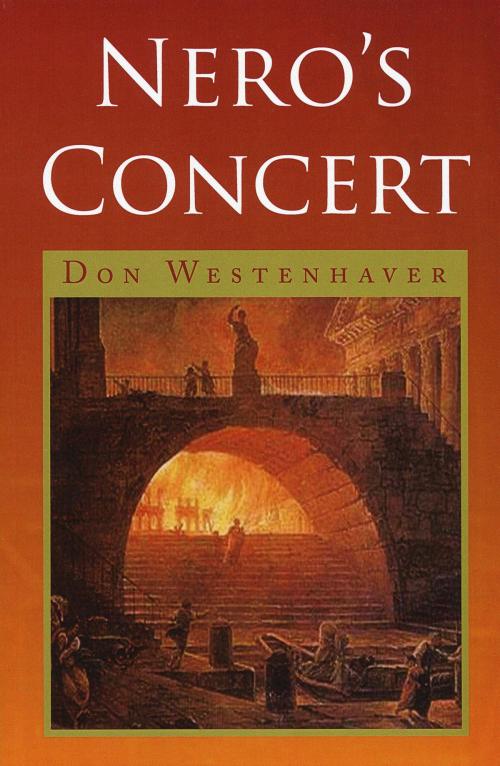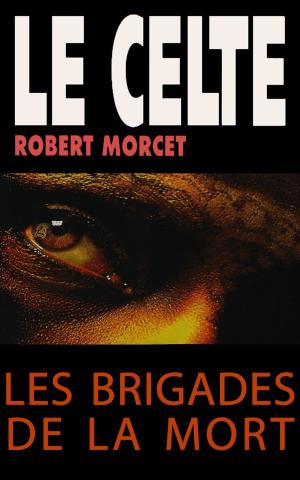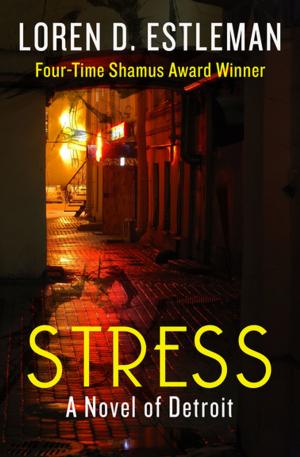| Author: | Don Westenhaver | ISBN: | 9781452374932 |
| Publisher: | Don Westenhaver | Publication: | February 8, 2010 |
| Imprint: | Smashwords Edition | Language: | English |
| Author: | Don Westenhaver |
| ISBN: | 9781452374932 |
| Publisher: | Don Westenhaver |
| Publication: | February 8, 2010 |
| Imprint: | Smashwords Edition |
| Language: | English |
In 64 AD, the heart of Rome burned to the ground while Emperor Nero famously performed a concert. For 2,000 years, historians have accused him of setting the fire himself and making Christians the scapegoats. To punish them, he embarked on a persecution that was to last for three centuries. But the real Nero was more complex. The story is told by Nero’s fictional best friend, Rusticus, a famous gladiator who saves the young emperor’s life in a chariot race and goes on to become a top minister in the imperial court. Guided by the distinguished philosopher Seneca, Nero stabilizes the Roman Empire. He downplays military conquest and barbaric displays of violence, opting instead for diplomacy, dependable food supplies, and the rule of law.
Nero and Rusticus personally lead thousands of firefighters and policemen to control the fire for over a week, after which the Emperor asks Rusticus to investigate how the fire began. With the aid of a beautiful nurse, Camilia, he soon discovers three murdered senators, their faces covered by masks. The masks portray three other murder victims who died years earlier: Nero’s mother, step-father, and half-brother. While setting his empire on a steady course, Nero has himself become unstable. He is furious that Rusticus cannot find any evidence that the Christians are to blame for the fire and he orders him out of Rome. Rusticus takes the opportunity to go to Pompeii so he can follow two leads in the murder investigation. He is accompanied by Camilia and their eight-year-old daughters, who have become constant companions. By the time they return to Rome, Rusticus has fresh clues about the murders, and he has fallen deeply in love with Camilia.
Rusticus plans to ask for her hand in marriage, but he discovers she is a secret follower of Christ. She has not only concealed this from him, but has introduced his daughter to the forbidden cult. Furious, he walks out on her as she weeps desperately. He quickly discovers two more murders, and this time they are close friends. Rusticus is being hounded by another of Nero’s advisers, Tigellinus, and he now knows it was Tigellinus that killed his wife two years earlier. Rusticus and his daughter are forced into hiding. The first group of Christians are rounded up and thrown in prison. Fearing for the safety of Camilia and her family, Rusticus realizes he cannot live without her. Reunited, they are captured and imprisoned, where he meets the head of the new religion, Peter, before they are all led off to the arena to die.
The heavily researched novel takes place in the devastated city of Rome under an emperor who is growing increasingly psychotic. Characters include the evil Tigellinus, Nero’s selfish new wife Poppaea, and a witch who seems to read minds. There is a fanatical Christian named Gladius who agitates the Romans by claiming that Christ is coming to smite the unbelievers with fire. Gladius is also the son of the Good Thief, and his life changed 30 years earlier when he witnessed his father die on the cross, pardoned by Jesus.
The tone of Nero’s Concert is similar to Robert Harris’ best-seller Pompeii, and the recent HBO series, “Rome”, in that it merges actual historical figures with fictional characters and does so in a way that brings the action to the level of the street, showing daily life not just as it was for the rich and famous, but also for the common people.
Book length: 118,000 words
In 64 AD, the heart of Rome burned to the ground while Emperor Nero famously performed a concert. For 2,000 years, historians have accused him of setting the fire himself and making Christians the scapegoats. To punish them, he embarked on a persecution that was to last for three centuries. But the real Nero was more complex. The story is told by Nero’s fictional best friend, Rusticus, a famous gladiator who saves the young emperor’s life in a chariot race and goes on to become a top minister in the imperial court. Guided by the distinguished philosopher Seneca, Nero stabilizes the Roman Empire. He downplays military conquest and barbaric displays of violence, opting instead for diplomacy, dependable food supplies, and the rule of law.
Nero and Rusticus personally lead thousands of firefighters and policemen to control the fire for over a week, after which the Emperor asks Rusticus to investigate how the fire began. With the aid of a beautiful nurse, Camilia, he soon discovers three murdered senators, their faces covered by masks. The masks portray three other murder victims who died years earlier: Nero’s mother, step-father, and half-brother. While setting his empire on a steady course, Nero has himself become unstable. He is furious that Rusticus cannot find any evidence that the Christians are to blame for the fire and he orders him out of Rome. Rusticus takes the opportunity to go to Pompeii so he can follow two leads in the murder investigation. He is accompanied by Camilia and their eight-year-old daughters, who have become constant companions. By the time they return to Rome, Rusticus has fresh clues about the murders, and he has fallen deeply in love with Camilia.
Rusticus plans to ask for her hand in marriage, but he discovers she is a secret follower of Christ. She has not only concealed this from him, but has introduced his daughter to the forbidden cult. Furious, he walks out on her as she weeps desperately. He quickly discovers two more murders, and this time they are close friends. Rusticus is being hounded by another of Nero’s advisers, Tigellinus, and he now knows it was Tigellinus that killed his wife two years earlier. Rusticus and his daughter are forced into hiding. The first group of Christians are rounded up and thrown in prison. Fearing for the safety of Camilia and her family, Rusticus realizes he cannot live without her. Reunited, they are captured and imprisoned, where he meets the head of the new religion, Peter, before they are all led off to the arena to die.
The heavily researched novel takes place in the devastated city of Rome under an emperor who is growing increasingly psychotic. Characters include the evil Tigellinus, Nero’s selfish new wife Poppaea, and a witch who seems to read minds. There is a fanatical Christian named Gladius who agitates the Romans by claiming that Christ is coming to smite the unbelievers with fire. Gladius is also the son of the Good Thief, and his life changed 30 years earlier when he witnessed his father die on the cross, pardoned by Jesus.
The tone of Nero’s Concert is similar to Robert Harris’ best-seller Pompeii, and the recent HBO series, “Rome”, in that it merges actual historical figures with fictional characters and does so in a way that brings the action to the level of the street, showing daily life not just as it was for the rich and famous, but also for the common people.
Book length: 118,000 words















